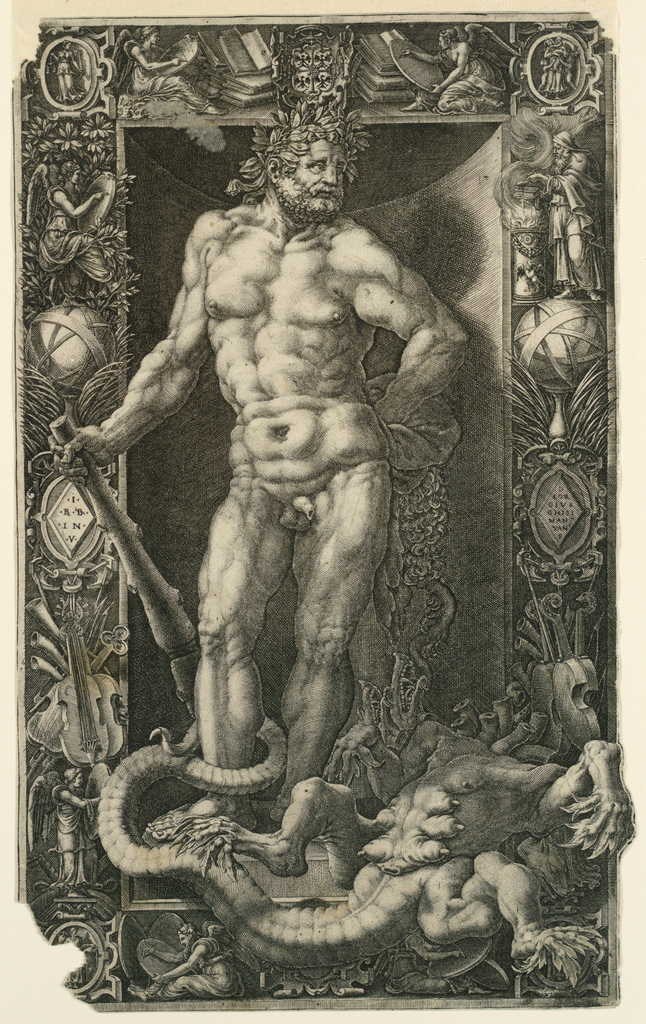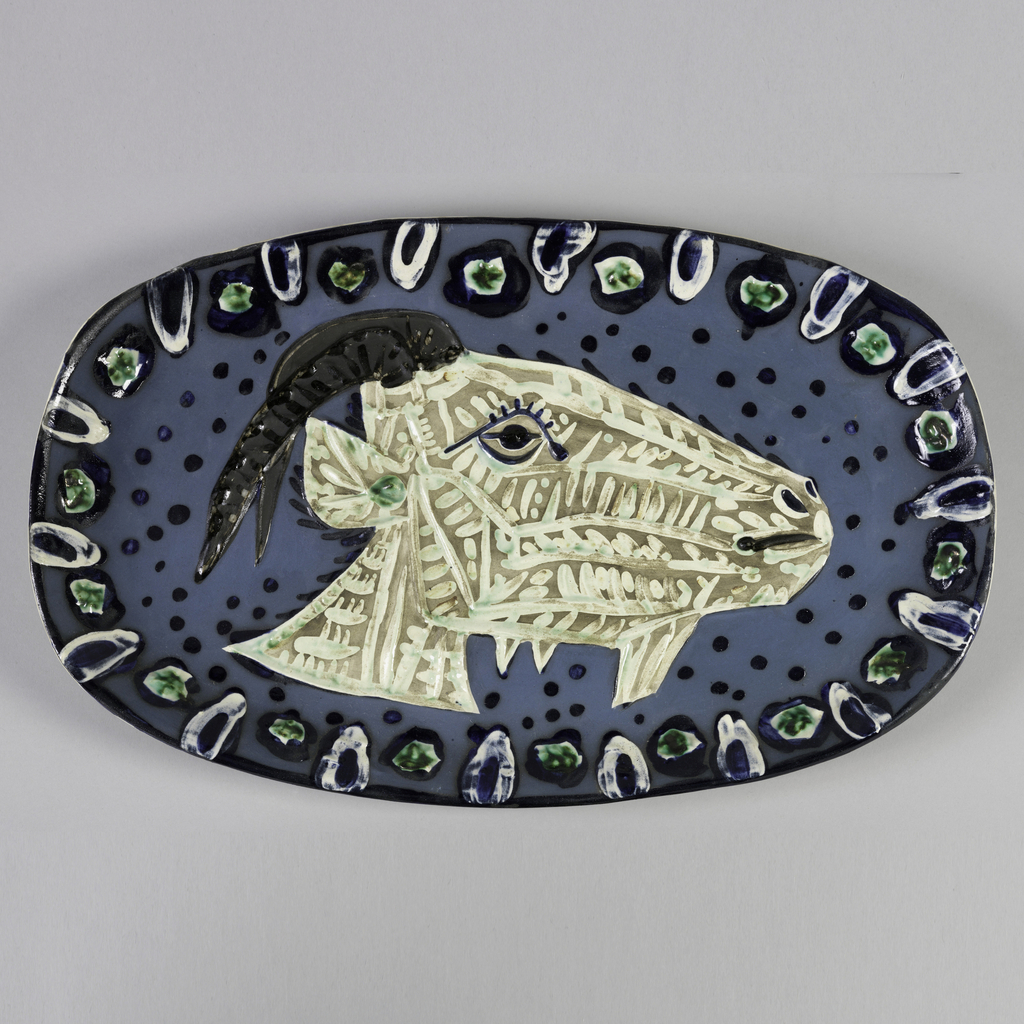In celebration of World Pride, June Object of the Day posts highlight LGBTQ+ designers and designs in the collection. In a 1916 profile published in Vanity Fair, Paul Thévenaz was described as a painter and a dancer. The article also identified the Swiss-born double threat as the cult leader of a movement called Rhythmician, an...
George Barbier’s Au Jardin des Hespérides (Garden of the Hesperides) appeared in 1913 in Gazette du Bon Ton. Translated as the “Journal for Good Taste,” it was intended for an elite readership concerned with high-society culture and entertainment, as well as the latest developments in fashion and beauty. The publication was led by the publishing...
This print, with its striking green hue, is the result of an innovative collaboration between two Italian Renaissance artists. Working together in Bologna in the late 1520s, the painter Francesco Mazzola (called Parmigianino, 1503-1540) and the printmaker Antonio da Trento (1508-1550) were early adopters of a new technique that allowed for the production of multicolored...
This is a gilt bronze furniture mount made in France, in about 1800. Highly decorative mounts like this one were important elements in interior and furniture design from the late seventeenth to the early nineteenth centuries. They were created by master artisans trained in a strict guild system which applied exacting standards to the fabrication...
This distinctive tea urn takes the form of Atlas supporting the world. Its triangular base has openwork decoration and rests on three ball feet. The spherical urn is held aloft by the kneeling figure of Atlas, straining as he supports the globe on his shoulders. The surface is decorated with reliefs featuring four wreathed circular...
In this richly ornamented print from the Drawings, Prints, and Graphic Design department, Giorgio Ghisi (Italian, 1520-1582) portrays Hercules’ success in completing his second labor in his print Hercules Victorious Over the Hydra of Lerna. This print was designed for a frontispiece for artist Giovanni Battista Bertani’s commentary, titled Gli oscuri e difficili passi dell’opera...
The mermaid, a creature formed from the upper body of a woman and the tail of a fish, has long been a legendary figure in folklore. From animated films to the sea creatures of sailor lore, the mermaid has been the subject of speculation and admiration. This green-glazed bowl with silver trim designed by Wilhelm...
It is not very often that a clock’s origins provide as much mystery as that of the Zephyr clock. Designed during the mid-30s, it was originally attributed to Kem Weber, a German émigré designer who created several iconic designs of the Streamline Moderne style until evidence arose via a 1938 Lawson Time brochure that Weber...
The theme of this Royal Jewel Cabinet from France, dated 1824-26, is no doubt indulgence in all forms – especially love and extravagance. Its rich iconography displays symbols of love and jewels, where antiquity is mixed with early-nineteenth century depictions of flowers.[1] The cabinet is constructed of porcelain plaques in a gilt-bronze armature. A golden...
Sixteenth-century Europe saw, with the apogee of humanism, the reactivation of intellectual and creative energies towards classical antiquity, through which the decorative arts flourished. Designs were highly imaginative, with increasingly complicated, fantastical motifs, in which material opulence coexisted with humanist knowledge in the form of historical and mythological themes.[1] A case in point is this...
Hildreth Meière (1892-1961) was a distinguished Art Deco muralist, painter, mosaicist, and decorative artist often applauded for her defiance of normative standards against the professional success of females. In 1936 she wrote, “It drives me wild to be spoken of as ‘one of the best women artists’. I’ve worked as an equal with men, and...
In 1946, Pablo Picasso attended the annual pottery exhibition in Vallauris in the South of France. He was so impressed by the works he had seen that the artist met with the owners of Madoura, Suzanne and Georges Ramié, who offered him full access to their workshop in exchange for the rights to produce his...
Ever wonder what your jewelry does when you aren’t wearing it? This brooch by the British art jeweler and goldsmith Kevin Coates demonstrates Coates grappling with this question. When Coates creates a piece of jewelry he often also designs an elaborate and beautiful housing for it to live in when not being worn, allowing the...
In the eighteenth century, many Italian artists produced views of popular tourist destinations to sell as souvenirs to travelers on the Grand Tour. This drawing by an unknown artist shows the Grotta Grande in the Boboli Gardens of Florence. Visible within the grotto’s chambers are Paris and Helena, sculpted in 1560 by Vincenzo di Rafaello...
The subject of this fan is an episode from the Ancient Greek myth of the Trojan War. Agamemnon has vowed to sacrifice his daughter Iphigenia to appease Artemis, whose wrath he incurred by killing deer in a sacred grove. This fan illustrates the dramatic moment when the goddess takes pity on the girl and at...














